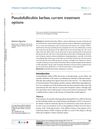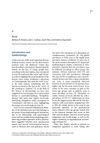Pseudofolliculitis Barbae: Current Treatment Options
April 2019
in “
DOAJ (DOAJ: Directory of Open Access Journals)
”
TLDR Stopping shaving or removing hair follicles usually resolves Pseudofolliculitis barbae.
Pseudofolliculitis barbae (PFB) was identified as a chronic inflammatory skin disorder, primarily affecting men of African and Asian descent, characterized by papules, pustules, and post-inflammatory hyperpigmentation. The condition was triggered by shaving or plucking, which caused hair to penetrate the skin, leading to an inflammatory reaction. The curved shape of hair follicles contributed to this issue. Diagnosis was clinical, and stopping shaving or removing hair follicles typically resolved PFB. A genetic factor, specifically a single nucleotide substitution in the K6hf gene, increased the risk of developing PFB by six times.




